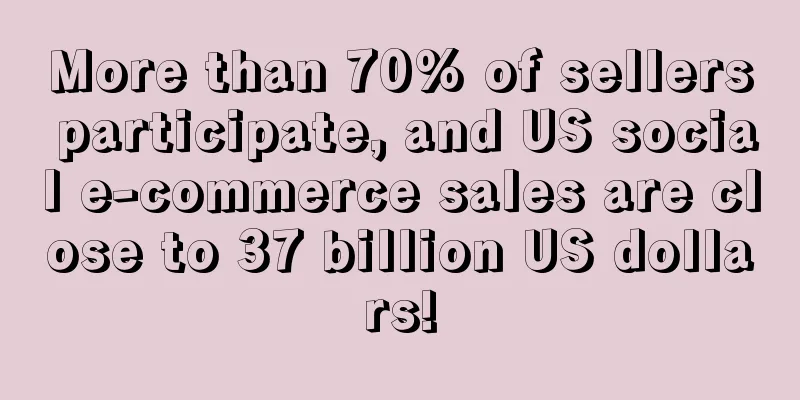More than 70% of sellers participate, and US social e-commerce sales are close to 37 billion US dollars!

|
Social e-commerce is developing. The current mainstream social platforms mainly include Meta's Instagram and Facebook, TikTok, Pinterest, etc.
After reviewing the e-commerce operations of some mainstream social platforms, eMarketer found that in terms of innovation, Instagram, Facebook and TikTok, the favorite of Generation Z, are currently in the leading position; but platforms such as Pinterest and Twitter are also doing their best to expand their e-commerce functions.
Instagram, Facebook and Pinterest have separate "Shop" tabs where sellers can create online storefronts; TikTok does not have a dedicated store page, but brands can add a "Shopping" tab.
eMarketer also found that Instagram and Facebook lead in features like in-app checkout, but TikTok and Pinterest are leveraging their strengths in product discovery to create value for retailers.
While many platforms offer some form of shoppable content, only Facebook and Instagram currently have in-app checkout options.
The lack of an in-app checkout isn’t necessarily a deal breaker for consumers, as 56% of U.S. consumers will make a purchase through social media by linking to a retailer’s website, according to Bizrate Insights. But eMarketer believes that purchase conversion rates should be higher if an in-app checkout option is available.
In addition, live shopping is increasingly being used as an entry point for social commerce. Twitter has begun testing live shopping features. And Pinterest recently launched Pinterest TV.
It is important to note that although 48% of American social media users said they had made purchases through social media in the past year, according to another survey, social commerce has not yet fully become mainstream. eMarketer expects social e-commerce sales in the United States to reach $36.62 billion this year , only one-tenth of China's.
Still, marketers are enthusiastic about the promise of social commerce: A study by The Harris Poll and Sprout Social found that 73% of businesses currently sell through social media, a number they expect to rise to 79% in the next three years.
eMarketer said that although social commerce has not yet become mainstream, it is still a very valuable tool for brand communication. Social e-commerce USA |
>>: 2022 Home Decoration Trend Forecast: Blue-green will be the dominant color
Recommend
What is Taiwanoolongs? Taiwanoolongs Review, Features
Taiwanoolongs is a dynamic team with many years o...
What is Brandslink? Brandslink Review, Features
Brandslink is a cross-border e-commerce supply ch...
Use it! Amazon allows sellers to send Christmas-themed marketing emails
The countdown to Christmas has begun. Due to the ...
What is One Stop Logistics? One Stop Logistics Review, Features
One-stop Logistics (Shenzhen One-stop Logistics Co...
What is gtranslate? gtranslate Review, Features
<span data-docs-delta="[[20,{"gallery"...
3.15 Blacklist: Nearly 50% of imported baby and child consumer products are substandard, and the substandard rate of stationery is as high as 91.7%
On March 15, Shanghai Customs held a press confer...
Coupang launches logistics business, which will shake up the Korean logistics industry
It is reported that when market growth slowed dow...
Sales and orders increased 2.5 times, and the epidemic prompted Lazada to accelerate its development
Lazada Philippines expects sales to continue to g...
What is OuiTrust? OuiTrust Review, Features
<span data-docs-delta="[[20,{"gallery"...
The 2021 Christmas product trends are out! These products are so popular...
Recently, in order to help sellers better choose ...
Walmart logistics partner Deliverr announces adjustment of order shipping fees
It is reported that starting from April 9, 2021, ...
What is ジーユー? ジーユーReview, Features
GU is a brand of Japan's Fast Retailing Group,...
Amazon “buys” user data, will sellers’ CPC advertising be a winner?
According to foreign media reports, some Amazon u...
What is Global Trade Link? Global Trade Link Review, Features
Global Trade Link is a one-stop service provider d...
Amazon faces lawsuit after own-brand product goes wrong again
In addition to third-party sellers, Amazon's ...









